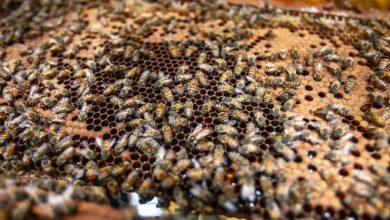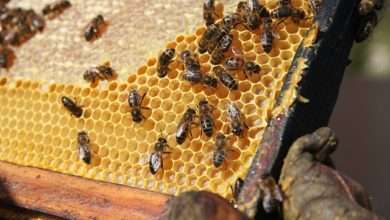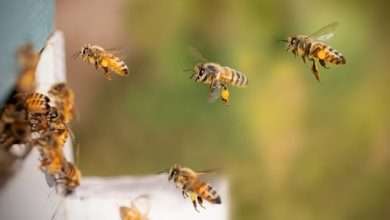Winter Feeding of Bees
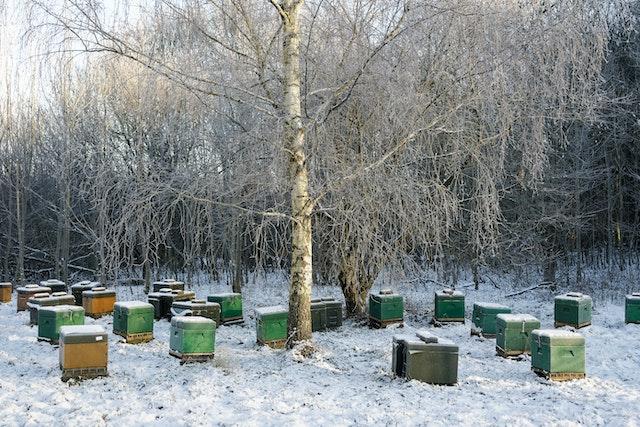
Have you considered whether your honey bee hive needs food now that winter is here and the weather is getting colder?
Giving your bees supplementary food or winter feeding can be a fantastic idea right now.
Let us first ask whether you even need to feed your bee colonies. Some beekeepers have strong opinions regarding whether or not to feed hives.
Mother Nature, though, may be a challenge, and many external forces have no control over our colonies. Food storage is negatively impacted by a lack of nectar or unfavorable foraging conditions.
Colonies that do not store a lot of honey should be fed before winter hits, or they will perish. The bees’ honey that they have conserved for the winter is always the finest sustenance for them.
If colonies are in need, should you feed them or let them perish? In the end, it’s up to you to choose that beekeeper. The majority of individuals choose to increase the bees’ food supply and support their survival.
Stored Honey Helps Keep Bees Warm
Insects include honey bees. During the winter, a lot of insects and bee species hibernate. Bees that make honey don’t hibernate.
Instead, they gather inside the hive during the chilly Winter days and produce a small amount of heat to stay warm. Fortunately, the colony is able to withstand Winter because of this amazing plan. Those who run out of honey frames are put to death.
They need to keep the honey in the proper places, which is another crucial concern. With an abundance of resources, they add honey to their top boxes and somewhat backfill the brood nest. This gives the hive a honey “avenue” to travel down.
Colony Preparation is Key
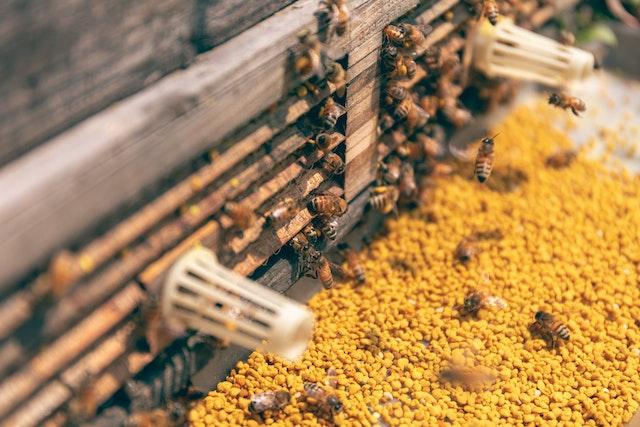
Do not commit the typical error of delaying bee feeding until the last minute while you work on feeding bees in the fall. Fall begins when? Fall is perceived by humans as beginning in September or October.
That is, however, too little, too late for hives that are starving. The bees are not prepared for winter when the cold weather approaches.
The most popular method for supplementing bee colonies’ diets is to feed them sugar water. The time, however, must be understood in order to prepare your colonies weeks before the winter sets in.
The majority of beekeepers are unable to survive the winter on sugar water feeding. Winter colonies generally shouldn’t be given sugar water.
In fact, much of the country will not be able to use this strategy due to the frigid weather. Additionally, without enough hive ventilation, the extra moisture in the hive might lead to major issues.
Reasons Colonies May Not Lack Winter Food
Long, scorching summers with little rain can cause nectar production to decline in many regions. Weather pattern shifts may cause drought or flooding rain in addition to normal dry spells.
Late-summer storms may hinder worker bees from collecting the nectar that is readily available. Our honey bee colonies’ feeding habits are impacted by all weather conditions.
If there is a fall honey flow, beekeepers must be careful not to take too much honey from the hive.
The patterns of honey production might occasionally be confusing to beginning beekeepers. They overconsume honey in the mistaken belief that the colony would have time to replenish it. This is frequently untrue. If all the extra is taken in July and the hive does produce more, you will have starved colonies on your hands.
How Much Honey do Your Bees Need for Winter?
Have your hives produced enough winter-ready honey? Why do you know that? Any colony’s ideal amount of honey reserves is based on three parameters. But keep in mind that there are always variables.
• Your climate (how cold does it get)
• The length of Winter in your area (how long Winter lasts)
• And, to some extent, the genetic makeup of your bees.
In most places, there is no doubt that the weather varies from one year to the next. However, a bee colony in Maine would always require more honey than one in Alabama.
Some honey bee species require higher food storage because they overwinter with larger populations. It is well known that more Italians overwinter than other nationalities.
A minimum of 60 lbs. of honey must always be kept in storage for any honey bee colony that resides in an area with some Winter cold. The same as a fully-loaded shallow super with certain items also stored in the deep. Some colonies have a lot more needs.
Through the agriculture departments of your state, get in touch with nearby beekeepers. Alternatively, search online for beekeepers who reside in your climate. These are some of your finest options for calculating the necessary sums.
When to Start Feeding Your Hives for Winter
Feeding should start six weeks before the arrival of winter weather if you reside in an area without a consistent or significant fall nectar flow. 2 parts sugar to 1 part water is what we need right now. A thick syrup that encourages bees to deposit it in their comb.
You might be able to finish the task in 3–4 weeks if you start in good time and during a warm period of weather. Depending on the level of assistance your bees require.
Four weeks before the first date of the fall frost, I always inspect the food in my hives. That gives me 4-6 weeks to make modifications before my typical cold shows up.
Naturally, all of this is based on the supposition that your colony is healthy and has enough workers. No matter how much food is hoarded, the colony will perish if varroa mites are not controlled.
Fall Nectar Flows Affect the Timing
I usually leave the bees a sizable portion of my honey crop when I gather it. They will not produce any surplus honey beyond late June, as I have observed from years of beekeeping in this area.
Additionally, the honey that was previously preserved for the winter months can get consumed in July and August due to the summertime weather.
A colony could be able to produce more honey in areas where the Fall nectar flow is strong so they can replenish their winter food supplies. Depending on your location, there might even be some extra for you.
If you manage to catch any late-season Fall swarms, the newly formed colonies will need additional support if they are to have any hope of making it until the following spring.
A beekeeper with numerous hives frequently uses open feeding. It is quick and simple to execute, but if done carelessly, it could lead to severe issues.
There are various different techniques to make open feeders, which are typically huge (at least 3-5 gallons). They are not as cost-effective as inside feeders, and if they are put close to your hives, they may encourage bee robbing.
You can create your own bucket feeder for use in the yard. If you employ this strategy, keep the feeding station far from the bee yard. At least 100 feet away from the hive is what I advise.
As the temperature cools, this technique is less effective because there are fewer warm hours in the day. Use it earlier in the season unless you live in a warm climate because it is not a good method for last-minute scenarios.
In the winter, you should not intend to provide sugar syrup to the bees. If you reside in a cold climate, it is preferable to take any sugar water feeders out of the hive when the daily high falls below 60 degrees Fahrenheit.
What to Feed Bees in Winter
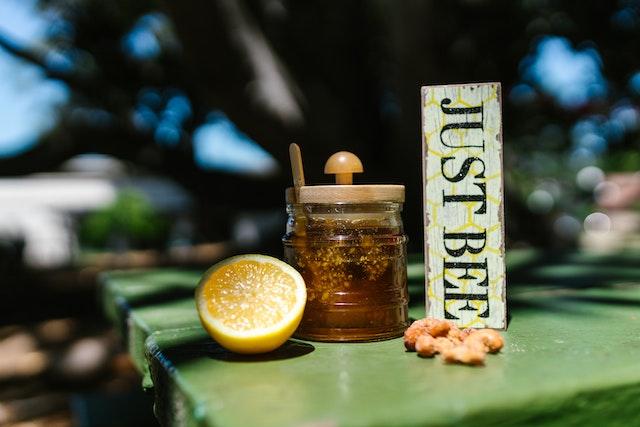
Your options for feeding honey bees over the winter months may diminish once the cold weather is here to stay. You might still have a few weeks of pleasant weather left before the cold sets in, allowing you to fit in a little sugar water feeding.
• 2:1 sugar water (2 parts sugar/1 part water) if in a warm climate
• Winter Patties – Sugar Cakes – Fondant
• Candy Boards
• Frames of Honey
Winter Patties – Fondant
Some beekeepers use bee fondant that they buy to give hives a little extra insurance if necessary. This kind of feeding strategy can stop starvation if the weather turns cold before your hive is prepared.
Others prefer to protect their colonies with a winter bee patty. These artificial pollen substitutes are sold in stores and are made of a combination of sugar and protein. In the hopes that they will survive the entire season, they are put inside the hive in late autumn.
They are occasionally referred to as “pollen patties,” but typically have higher protein and lower sugar content. For your hives in late winter or early spring, you can make your own pollen patties.
As long as it’s warm outside, do not put them in the hive. Additionally, if you reside in an area where Small Hive Beetles are a problem, make sure to remove them by spring. Larvae of beetles adore pollen patties.
It is nice to include a fondant or winter patty as additional hunger protection.
Candy Boards
In recent years, I have been experimenting with turning a straightforward emergency sugar cake recipe into a homemade candy board. The preparation is a little untidy, but the overwintering bees have responded quite well to them.
Frames of Honey
Have you got any honey jars from other hives? You might have frozen some honey that you have on hand.
One of the best ways to feed Winter beehives is to give them honey before the weather becomes cold, provided you are certain the honey is not from a diseased colony (American Foulbrood).
When to Stop Feeding Bees for Winter
Stop providing them with food once your colony has enough honey saved for a typical winter in your area. I’m hoping you get this done before the end of the Fall.
No, you cannot put a Winter patty on at the last minute and expect to have the same outcomes as you would with appropriate feeding.
Winter Feeding of Bee Colonies
It is important to feed honey bees in the winter well before it becomes chilly. Most of the time, you should not need to eat during the coldest winter months.
Failure to prepare and begin feeding the hives weeks before the arrival of cold weather may result in the loss of colonies that did not have to perish. No beekeeper ever intends to starve their bees, yet a lot of them do.
When they finally open the hive just before Winter, it might already be too late because they delayed late-season inspections. When the other bees emerge in the spring to search for food, your hives will be prepared if you take the right precautions.
FAQ
Should I feed my bees during the winter?
Giving your bees winter feeding or supplementary food right now can be a terrific idea. Honey bees do not hibernate throughout the winter months; instead, they utilize food reserves to stay warm when the hive’s interior temperature falls to less than 50 degrees.
How much do you feed bees in the winter?
A minimum of 60# (60 pounds) of honey must always be kept on hand for every honey bee colony that resides in an area with some Winter cold. A shallow superbox that is nearly full and has some items placed in the deep. More is required in some colonies.
What do bees eat during winter?
Bees consume the honey they have accumulated over the course of the spring and fall seasons in the winter. Their primary energy source is honey, even if pollen is necessary for their diet.
Can I feed bees sugar water in winter?
When honey bees are gathered in a cluster, never feed them liquid sugar water. Below 50 degrees, a liquid sugar solution is rarely consumed by bees (f). Due to the increased sugar level throughout the winter, they will devour honey or candy bars.
When is it too cold to feed bees?
At about 57 degrees F, honey bee colonies begin to group together. Before reaching that temperature, liquid feeding should be halted.
How do you know if bees have enough honey for winter?
For the winter, bees need to store enough food in the fall. The amount of honey needed per hive in temperate climates should be around 55 pounds (25 kg); further north, up to 125 pounds (60 kg) may be needed.
Where do you put the winter patties in the hive?
Patty should be placed directly over the frames in the hive’s brood chamber. Wax paper can be used to keep burgers.
How do you emergency feed bees in the winter?
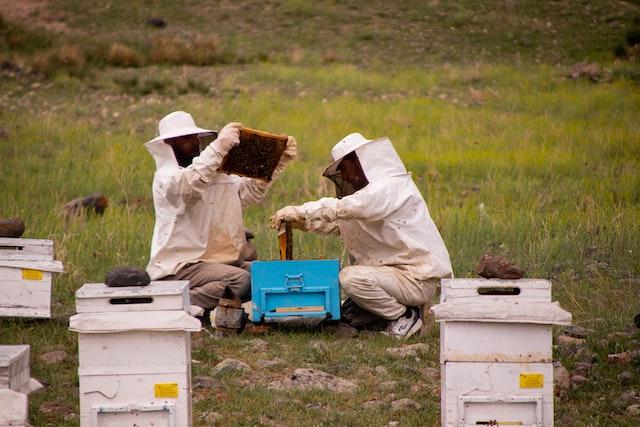
Even if they do manage to collect it, they would need to urinate because they consume a lot of liquid feed, and if your feeder leaks on them, they risk freezing to death. As an alternative, combs of capped honey or solid sugar should be supplied to bees as a last-resort winter food source.
Can bees survive winter without honey?
Simply said, honey bees need food and a warm place to reside during the winter in order to survive.
Honey provides the nourishment and energy needed to stay warm, and if the colony runs out of honey before spring, it risks freezing to death.
Can I leave honey super on over winter?
Yes, you are allowed to leave a honey super or several supers on the hive over the winter. In reality, the majority of beekeepers do set aside one or two supers for the bees to utilize.
The size of the box or boxes designated as the “food super” for the bees varies from one beekeeper to the next and from one region to another.

